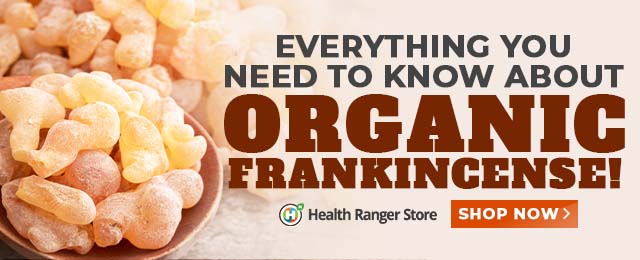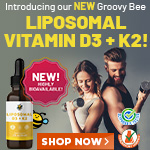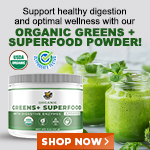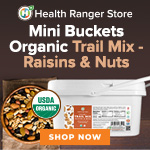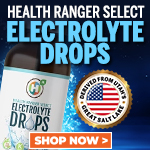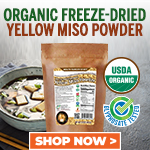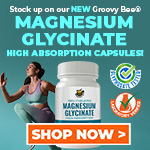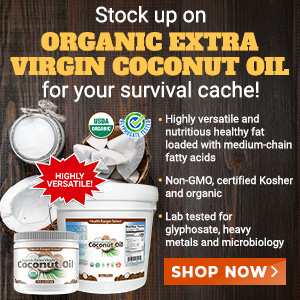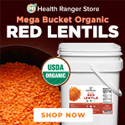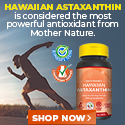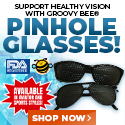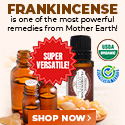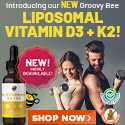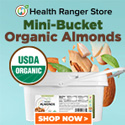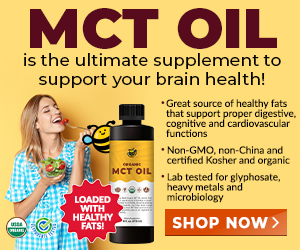Vitamin C, ascorbic acid and food-based nutrients: Three nutritional wisdom breakthroughs I've come to realize as a food research scientist
 Thursday, April 28, 2016
Thursday, April 28, 2016
by Mike Adams, the Health Ranger
Tags: vitamin C, ascorbid acid, sodium ascorbate
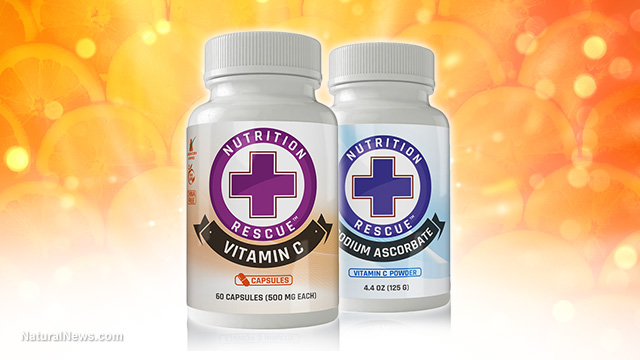
(NaturalNews) I've learned a lot about vitamin C over the last few years, and I wanted to share my latest findings as a food research scientist running a world-class laboratory (CWClabs.com, which is now very close to achieving ISO 17025 accreditation). For the record, I'm also the author of Food Forensics, launching this July in bookstores everywhere. (Download the first chapter now at FoodForensics.com)
For many years, I thought there were only two kinds of vitamin C: "synthetic" vitamin C (ascorbic acid) and "natural" food-based vitamin C. I've always said that food-based nutrition is superior to synthetic nutrition, which is exactly why the Natural News Store has offered camu camu superfruit powder as a natural, full-spectrum source of vitamin C.
But the more I learned about vitamin C, the more my eyes were opened to the therapeutic use of pure ascorbic acid, a vitamin C molecule that's built (i.e. "synthesized") from plant materials, enzymatic and fermentation processes into a high-grade therapeutic nutrient. What follows here are three important realizations I didn't know before that I now recognize as being crucial for understanding the roles of food-based nutrient vs. isolated nutrient supplementation.
Realization #1) Many people have very poor digestion
It turns out that many people have extremely poor digestion and can't extract vitamin C from whole food sources during digestion. Even when they eat food sources containing the nutrient, they don't absorb much of it. Most of the vitamin C is getting flushed right through their digestive systems.The only form of vitamin C they digest well, for these people, is a highly water soluble form that requires almost zero digestion on their part. In other words, even if they have very weak stomach acid, they can absorb the nutrients through their intestinal walls, with almost no breaking down of nutrients needed via acid oxidation or probiotic fermentation in the gut.
Realization #2) People don't eat high sources of vitamin C frequently enough
Vitamin C, being water soluble, flushes out of your system in a matter of hours. As a result, unless you're taking in high sources of vitamin C twice a day or so, your body is systematically depleting vitamin C and can potentially leave you deficient in the nutrient for long periods of time.To keep your body primed with vitamin C, you actually need consistent vitamin C intake at least twice a day -- from foods or other sources. Yet I find that very few people eat high vitamin C foods more than once a day. (That lunch of burger and fries doesn't count...)
So vitamin C supplementation can help cover the nutrition gaps between the meals where you're getting real food-based vitamin C. The upshot here is simple: YES, eat vitamin C from food sources any time you can! But when you can't, supplement it to boost your vitamin C intake until you get to your next meal of blueberries, strawberries, pineapple, etc. This is how food-based nutrition and supplement-based nutrition can work together for optimum nutritional coverage.
Realization #3: Isolated nutrients can offer therapeutic POTENCY that can outperform a full-spectrum nutrient matrix for certain applications
Finally, there's another extremely important realization that didn't hit me on all this until I started running plant extracts on my LC/MS-TOF instrumentation, which is a liquid chromatography, mass spectrometry time-of-flight system. (You can see photos of this system at my lab website, CWClabs.com)On that system, I can analyze whole plants across their entire spectra of molecular masses, separated by mass-to-charge ratios, column retention times, molecular fragmentation patterns and more. When you analyze spectral data showing the various molecules found in herbs, plants and superfoods, you always see a huge "forest" of overlapping chromatography peaks that represent different organic compounds and molecules. They're all mixed in together, and chemists refer to this as "junk" that gets in the way of quantitating the targeted molecule you're trying to find.
But it isn't junk! It's all the other synergistic molecules that go together with the nutrient you're looking for. Medicinal plants or superfoods like turmeric often contain hundreds or even thousands of various chemical compounds and organic molecules that provide the full spectrum of health-supporting properties.
But here's the kicker...
Many of these supporting molecules are not as potent as the target molecule you're looking for (such as curcuminoids in turmeric), yet they compete for absorption in your body's cells, effectively reducing the concentration and potency of the isolated nutrient you're interested in. Turmeric, for example, contains curcuminoids but also hundreds of other nutrients. When eaten as a whole food, all those various nutrients (molecules) compete with the potency and concentration of curcuminoids in your blood. In this way they provide a wide-ranging array of nutrients with less potency of each nutrient.
Think of a wide-angle flashlight that's shining a very wide beam into a forest. It's lighting up the trees, but the amount of light on any given tree is quite dim.
However, if you extract, isolate or build these nutrients using fermentation, enzymatic reactions of other means, you get a single nutrient that's highly purified, homogenous and extremely potent. This nutrient, taken in isolation, lacks the diversity of the plant-based nutrients but gains enormous potency and therapeutic intensity in the body. Suddenly, a molecule that's only found in foods at very low levels can become a highly therapeutic molecule at high concentrations consumed in isolation.
Imagine a tightly-focused flashlight aimed at a single tree, bathing it in intense light. That's the "narrow focus" of an isolated nutrient. In other words, if you need to get more vitamin C to your body's cells very quickly, camu camu isn't nearly as concentrated as ascorbic acid. Camu camu is a wonderful superfood, but it contains fiber, proteins and hundreds of other competing molecules that soften the effective absorption velocity of the vitamin C when compared to purified ascorbic acid.
In some cases, however, certain isolated nutrients (usually fat-soluble nutrients) can be far more dangerous due to potential toxicity. For example, while coca leaf tea is perfectly safe to consume, consuming highly purified cocaine is obviously hazardous to your health. In exactly the same way, natural caffeine-containing plants like coffee can be extremely healthy (when consumed in moderation), whereas consuming large quantities of refined caffeine powder can actually be fatal. Vitamin D, likewise, is extremely beneficial in the proper dosage, yet it can also be toxic if taken in ridiculously large quantities.
There is where purified vitamin C is so amazing: It's highly concentrated yet almost totally non-hazardous. It's almost impossible to overdose to the point of harm from vitamin C. I'm not aware of a single case in the history of the world where someone died from taking too much vitamin C. Thanks to that safety profile, isolated vitamin C (ascorbic acid) can be consumed in its high purity form where it gets rapidly absorbed by the body, without other competing molecules getting in the way.
What that, you have vitamin C that can be extremely beneficial for people who are vitamin C deficient, who have poor food digestion, or who seek immune support because their immune systems are suppressed or compromised in some way. For some people, purified vitamin C is far more effective than food-based vitamin C. It all just depends on the person, their specific health challenges and their digestive efficiency.
That's why I've chosen vitamin C as the first nutrient to donate to people in need as part of my Nutrition Rescue initiative (NutritionRescue.com). Through Nutrition Rescue, we are donating one bottle of regular-grade vitamin C for each bottle of high-grade vitamin C that we sell. This "conscious capitalism" program allows us to get a purified form of vitamin C (ascorbic acid) into the hands of people who have been harmed by immune-damaging chemotherapy treatments, for example.
What I've come to realize is that people who are nutrient deficient often need the highly purified forms to reestablish healthy levels as quickly as possible. From there, they can often "maintain" nutrition through food choices, with supplemental vitamin C being added to their diets from time to time as health challenges warrant.
How is your vitamin C manufactured?
The vitamin C we sell under the Nutrition Rescue brand starts as plant-based raw materials. These materials are then fermented, enzymatically altered and restructured ("synthesized") into ascorbic acid molecules. All plants that contain vitamin C also synthesize their own ascorbic acid molecules. Plants synthesize powerful molecules from the moment they begin to sprout... that's why plant foods contain all sorts of nutrients and vitamins that aren't found in their seeds (such as carotenoids, phycocyanins, curcuminoids, polyphenols, vitamins, etc.)It's important to understand that vitamin synthesis is a process used by Mother Nature to build molecules that provide survival benefits to plants, animals and other living organisms. Your own body synthesizes nutrients such as hormones and vitamin D.
"Synthesis" simply means creating a new whole from various parts. It's a process that's used across nature. What's important, in my view, is making sure that none of the raw materials or processes involve GMOs or genetic engineering. It's also crucial to make sure the final product is clean and free from heavy metals or other toxins. That's what we do in my lab: We test everything for heavy metals, microbiology, molecular identity and more.
The upshot is that by combining our laboratory technology with extremely critical sourcing, we can bring you the world's most meticulously scrutinized, non-GMO vitamin C (and buffered vitamin C) that you'll find anywhere. For those who need the potency and purity of ascorbic acid, we've got it in both its native form (ascorbic acid) and a buffered form (sodium ascorbate).
For those who want a more broad spectrum, food-based form of vitamin C as much lower potency, we have Camu Camu powder, which is naturally high in vitamin C along with hundreds of other supporting nutrients. (But it's not nearly as potent as isolate ascorbic acid, you see.)
Which one is right for you? That's a decision best left up to you and your naturopath. Everybody has unique challenges and goals when it comes to health, so use what's right for you after discussing your nutritional strategies with your naturopathic physician.
If it's right for you, get your non-GMO, lab-verified vitamin C now at NutritionRescue.com, and remember that we'll donate a bottle of vitamin C to someone in need for every bottle you purchase. (Yes, it's a one-for-one arrangement.)
By the way, we're already receiving donation requests from victims of Dr. Farid Fata's criminal cancer fraud that took place in Detroit. We're already starting to build a list and our donation shipments will begin in less than 30 days. Thank you all for your patience and your support as we pursue this inspired mission to bring amazing nutrition to people who have been immune-damaged by the medical establishment.
Vitamin C at FETCH.news
Get independent news alerts on natural cures, food lab tests, cannabis medicine, science, robotics, drones, privacy and more.
 About the author:Mike Adams (aka the "Health Ranger") is a best selling author (#1 best selling science book on Amazon.com) and a globally recognized scientific researcher in clean foods. He serves as the founding editor of NaturalNews.com and the lab science director of an internationally accredited (ISO 17025) analytical laboratory known as CWC Labs. There, he was awarded a Certificate of Excellence for achieving extremely high accuracy in the analysis of toxic elements in unknown water samples using ICP-MS instrumentation. Adams is also highly proficient in running liquid chromatography, ion chromatography and mass spectrometry time-of-flight analytical instrumentation.
About the author:Mike Adams (aka the "Health Ranger") is a best selling author (#1 best selling science book on Amazon.com) and a globally recognized scientific researcher in clean foods. He serves as the founding editor of NaturalNews.com and the lab science director of an internationally accredited (ISO 17025) analytical laboratory known as CWC Labs. There, he was awarded a Certificate of Excellence for achieving extremely high accuracy in the analysis of toxic elements in unknown water samples using ICP-MS instrumentation. Adams is also highly proficient in running liquid chromatography, ion chromatography and mass spectrometry time-of-flight analytical instrumentation.
Adams is a person of color whose ancestors include Africans and Native American Indians. He's also of Native American heritage, which he credits as inspiring his "Health Ranger" passion for protecting life and nature against the destruction caused by chemicals, heavy metals and other forms of pollution.
Adams is the founder and publisher of the open source science journal Natural Science Journal, the author of numerous peer-reviewed science papers published by the journal, and the author of the world's first book that published ICP-MS heavy metals analysis results for foods, dietary supplements, pet food, spices and fast food. The book is entitled Food Forensics and is published by BenBella Books.
In his laboratory research, Adams has made numerous food safety breakthroughs such as revealing rice protein products imported from Asia to be contaminated with toxic heavy metals like lead, cadmium and tungsten. Adams was the first food science researcher to document high levels of tungsten in superfoods. He also discovered over 11 ppm lead in imported mangosteen powder, and led an industry-wide voluntary agreement to limit heavy metals in rice protein products.
In addition to his lab work, Adams is also the (non-paid) executive director of the non-profit Consumer Wellness Center (CWC), an organization that redirects 100% of its donations receipts to grant programs that teach children and women how to grow their own food or vastly improve their nutrition. Through the non-profit CWC, Adams also launched Nutrition Rescue, a program that donates essential vitamins to people in need. Click here to see some of the CWC success stories.
With a background in science and software technology, Adams is the original founder of the email newsletter technology company known as Arial Software. Using his technical experience combined with his love for natural health, Adams developed and deployed the content management system currently driving NaturalNews.com. He also engineered the high-level statistical algorithms that power SCIENCE.naturalnews.com, a massive research resource featuring over 10 million scientific studies.
Adams is well known for his incredibly popular consumer activism video blowing the lid on fake blueberries used throughout the food supply. He has also exposed "strange fibers" found in Chicken McNuggets, fake academic credentials of so-called health "gurus," dangerous "detox" products imported as battery acid and sold for oral consumption, fake acai berry scams, the California raw milk raids, the vaccine research fraud revealed by industry whistleblowers and many other topics.
Adams has also helped defend the rights of home gardeners and protect the medical freedom rights of parents. Adams is widely recognized to have made a remarkable global impact on issues like GMOs, vaccines, nutrition therapies, human consciousness.
In addition to his activism, Adams is an accomplished musician who has released over a dozen popular songs covering a variety of activism topics.
Click here to read a more detailed bio on Mike Adams, the Health Ranger, at HealthRanger.com.
Take Action: Support Natural News by linking to this article from your website
Permalink to this article:
Embed article link: (copy HTML code below):
Reprinting this article:
Non-commercial use OK, cite NaturalNews.com with clickable link.
Follow Natural News on Facebook, Twitter, Google Plus, and Pinterest
- Newly released JFK files reveal Pentagon's role in creating Lyme disease and covid in the same lab
- Trump nominates VACCINE ZEALOT Susan Monarez to lead the CDC, sidelining RFK Jr.'s reform efforts
- Obama accused of laundering USAID funds to fuel global protest movements, regime change operations
- HUGE: Putin claims 2020 election fraud in U.S. sparked Ukraine war, calls for peace talks with Trump
- Chris Rufo finally reveals abuse liberals unleashed on his wife and young kids...
- Deep State in disarray: Trump's funding freeze sows chaos, Democrats vow legal battle
- Trump shows his true colors
- STARDUST, a secretive Israeli-US startup, plans risky solar geoengineering experiment to BLOCK OUT THE SUN
- Trump's greatest betrayal so far: Accelerating Middle East wars, silencing dissent, and serving Zionist masters
- $2B Roundup verdict: A landmark blow to Bayer and a win for health freedom
- Outrageous government fraud: $312M in COVID loans went to children as young as 9 months old
- Festive flavors: The sweet history, nutritional profile and health benefits of pecan pie
- Elon Musk: Aliens could be here on Earth RIGHT NOW
- SWEET SABOTAGE: CIA's secret war on Soviet sugar revealed in JFK files
- Dr. Mike Yeadon releases 15-minute testimony - WATCH - about genocidal intent of COVID “vaccines”
- “Forever chemicals” in drinking water drive alarming cancer surge, new study warns
- Govt. agency closed by DOGE looked like a palace inside, with oil paintings fit for a KING...
- “Behind the Green Mask”: Rosa Koire exposes the hidden agenda of UN Agenda 21
- Newly released JFK files reveal Pentagon's role in creating Lyme disease and covid in the same lab
- Elon Musk: Aliens could be here on Earth RIGHT NOW
- Reclaim your health: How midlife exercise reverses years of inactivity
- Trump reverses course on Gaza plan, says “nobody is expelling Palestinians”
- EPA advisor admits the agency is funneling billions to climate groups ahead of Trump’s return to White House
- Big Pharma's $8 Billion bribery scheme exposed: how doctors are pushed to prescribe junk science, not heal
- Space war brewing? Russia threatens to destroy Starlink satellites
- A lack of integrity in Academia: Harvard professor found GUILTY of fraudulent research to promote CRT theory
- Survival 101: Effective EMF blocking techniques
- Rep. Nancy Mace introduces bill to ban biological males from female facilities on federal property
- Mike Adams Sermon 66: God will DESTROY ISRAEL for its wickedness
- Pilots report mysterious lights 'moving at extreme speeds' across Oregon skies
- 5 Simple steps to boost your brainpower: How to strengthen executive function in a distracted world
- Historian warns Israel may be entering an “IRREMEDIABLE DECLINE”
- Florida takes a stand: DeSantis proposes permanent ban on mRNA vaccine mandates
- RFK Jr.'s SSRI antidepressant investigation sparks liberal meltdown, exposes Big Pharma's dangerous game
- OpenAI whistleblower who dissented against how the company trained ChatGPT found dead
- Sugarcane extract superior to cholesterol-lowering drugs?
- EPA advisor admits the agency is funneling billions to climate groups ahead of Trump’s return to White House
- The Health Ranger releases “Vaccine Zombie” song and music video, using AI-animated zombies for the music video
- California's social media censorship law struck down: A victory for free speech or a threat to online safety?
- Dr. Mike Yeadon releases 15-minute testimony - WATCH - about genocidal intent of COVID “vaccines”
- The pandemic as a tool for INDOCTRINATION: Understanding “The Indoctrinated Brain” by Dr. Michael Nehls
- Mike Adams releases country western hit single: Goin’ Back in Time is Comin’ Home
- Mike Adams releases music poetry sensation: A Child of God
- RFK Jr. clears key hurdle: Sen. Susan Collins backs controversial HHS nominee, signaling a new era for health policy
- Florida takes a stand: DeSantis proposes permanent ban on mRNA vaccine mandates
- Unpacking the Lies That We’ve Been Fed – new song and music video released by Mike Adams, the Health Ranger
- Mike Adams releases new song and music video: Nothing More Disgusting Than a Globalist
- Congratulations to the FULLY UNVACCINATED as you resisted the COVID-19 PROPAGANDA MACHINE fueled by over $100 BILLION
- “Why we influenced the 2020 elections”: Facebook files reveal the coordinated effort to bury the Hunter Biden laptop story
- Michigan sheriff announces criminal investigation into 2020 election crimes, Dominion Voting Systems
- Israeli soldiers accused of even more torture and abuse in the West Bank
- Migrants are taking advantage of recent hurricanes to scam residents and loot their homes
- House Intelligence Committee calls for the ARREST and PROSECUTION of Dr. Anthony Fauci
- Peter Rost exposes Big Pharma corruption in his book “The Whistleblower: Confessions of a Healthcare Hitman”
- Red Cross issues warning to stop blood plasma donations from vaccinated people
- Scientists confirm: GENIUS brain function can be spontaneously unleashed in humans without any apparent cause
- EPA advisor admits the agency is funneling billions to climate groups ahead of Trump’s return to White House
- HYSSOP: What research reveals about the health benefits of this ancient holy herb
- Two containers with completed ballots fall out of truck in Florida
- Fully vaccinated about to see “tsunami” of illness and death, warns virologist
- Global leaders unite to clamp down on “misinformation” with UN-backed Cascais Declaration
- BREAKING: 2025 NDAA authorizes mandatory military draft of WOMEN across America… as Pentagon pursues global NUCLEAR war with both Russia and China at the same time
- Michael Yon warns of a ZIONIST TAKEOVER in Trump’s second administration
- BOMBSHELL: DNA testing kits are a SCAM to develop ethnic-specific bioweapons
- Ozempic and Wegovy weight loss drugs are injectable LIZARD VENOM PEPTIDES that may unleash a devastating wave of organ failure… side effects align with symptoms of SNAKE BITES
- Israeli soldiers accused of even more torture and abuse in the West Bank
- These 13 countries just signed an agreement to engineer a global FAMINE by destroying food supply
- NASA admits that climate change occurs because of changes in Earth’s solar orbit, and NOT because of SUVs and fossil fuels
- RFK Jr. clears key hurdle: Sen. Susan Collins backs controversial HHS nominee, signaling a new era for health policy
- Sermon 30: How Jesus reveals Caesar’s FAKE CURRENCY and FALSE AUTHORITY
- Coriander seeds: Ancient medicine backed by modern science
- Arizona officials claim Maricopa County needs 10-13 days to tabulate results of the election
Science News & Studies
Medicine News and Information
Food News & Studies
Health News & Studies
Herbs News & Information
Pollution News & Studies
Cancer News & Studies
Climate News & Studies
Survival News & Information
Gear News & Information
News covering technology, stocks, hackers, and more



"Big Tech and mainstream media are constantly trying to silence the independent voices that dare to bring you the truth about toxic food ingredients, dangerous medications and the failed, fraudulent science of the profit-driven medical establishment.
Email is one of the best ways to make sure you stay informed, without the censorship of the tech giants (Google, Apple, Facebook, Twitter, YouTube, etc.). Stay informed and you'll even likely learn information that may help save your own life."
–The Health Ranger, Mike Adams











